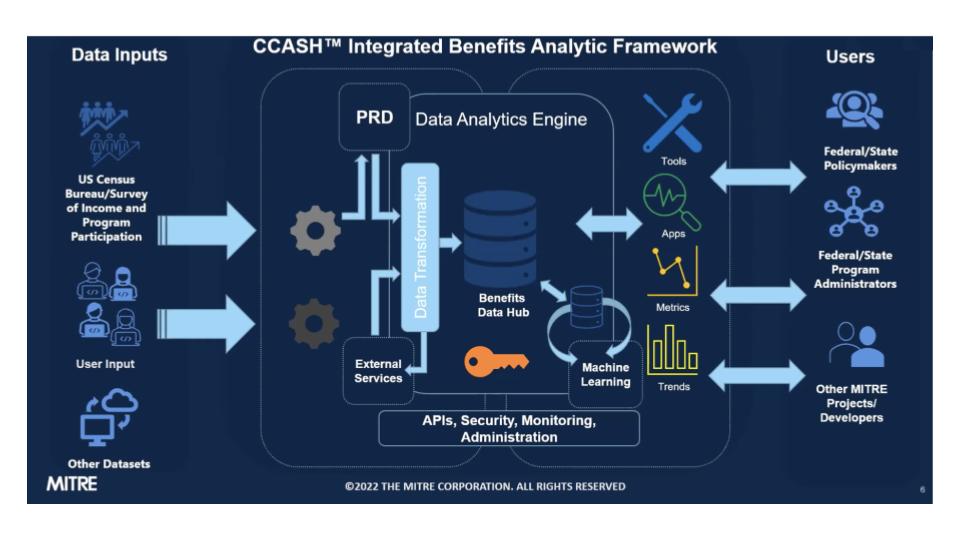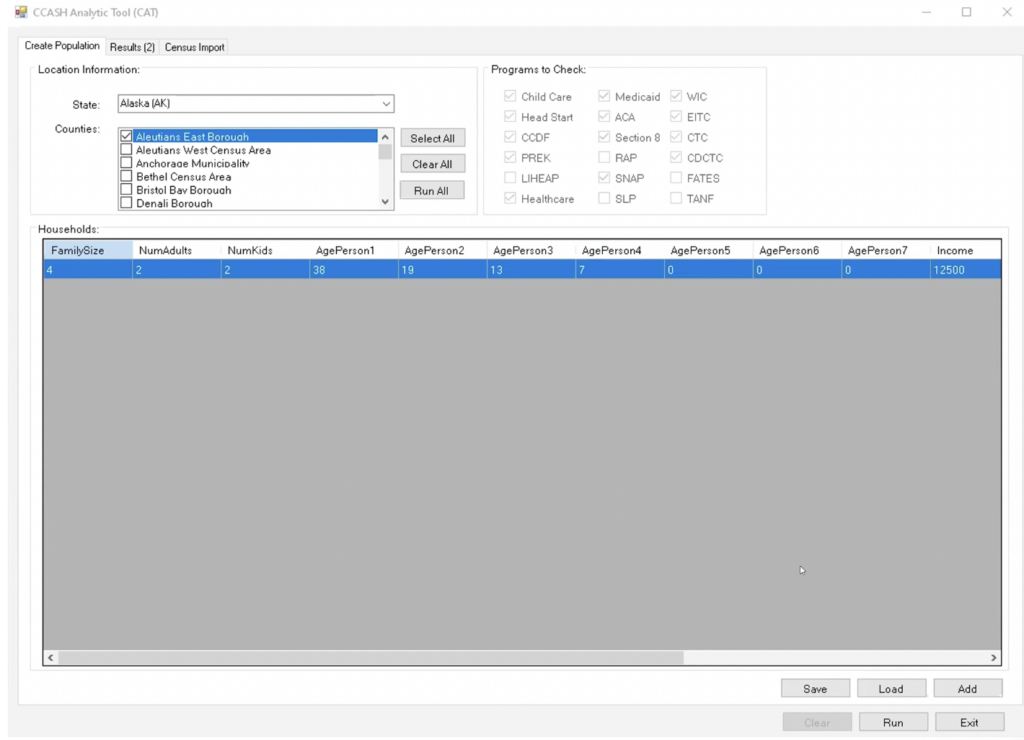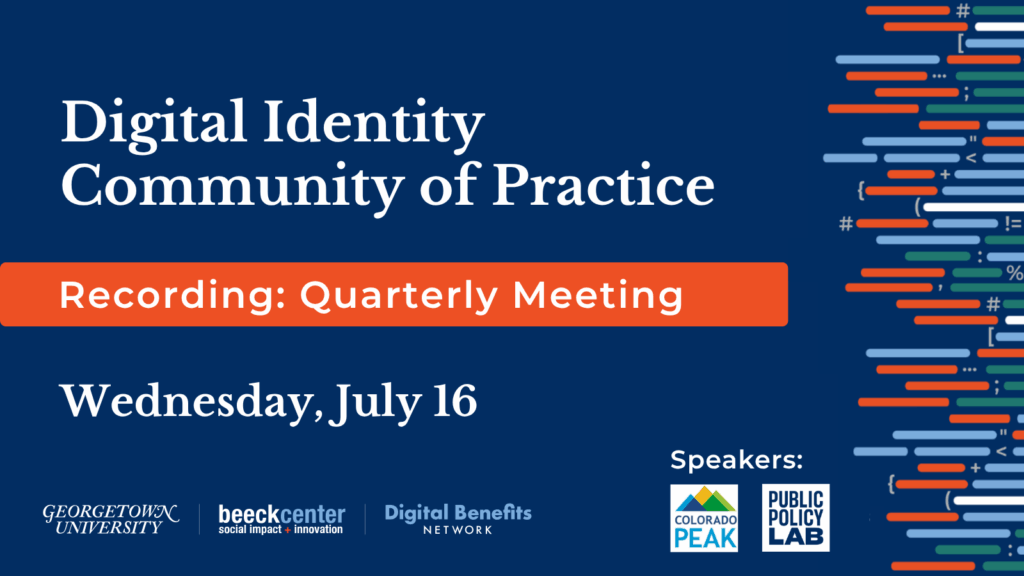Project Snapshot: Comprehensive Careers and Supports for Households (CCASH)™
MITRE developed the Comprehensive Careers and Supports for Households (CCASH™) tool to help individuals understand and manage federal benefits and employment services, transitioning from a consumer-focused tool to a policy analytics system. By integrating data from sources like the U.S. Census and the Policy Rules Database, MITRE created a model that allows users to analyze and compare benefits eligibility across states, supporting evidence-based policymaking.

Organization Description + Mission
MITRE is a not-for-profit organization that works in the public interest across federal, state, and local governments, as well as academia and industry. MITRE operates federally funded research and development centers (FFRDCs) and conducts independent research. Their work aims to tackle challenges to the safety, stability, and well-being of the U.S.
Approach to Eligibility
In response to economic insecurities caused by the pandemic, especially among low-income individuals, MITRE developed a new tool called Comprehensive Careers and Supports for Households (CCASH™). The team built early versions of CCASH™ with rules for a limited set of federal programs to create a direct-to-consumer tool that could help individuals understand and manage federal health, social, and employment services. The tool eventually enabled users to get a comprehensive view of potential benefits across 12 major federal programs, and provided information on how career decisions might impact benefits eligibility.
During the first year of the project, the MITRE team learned about the Cost of Living Database (CLD) and the Policy Rules Database (PRD), a collaborative project between the Atlanta Federal Reserve Bank and the National Center for Children in Poverty. At the time, the PRD team had already collected eligibility rules for over 12 federal and state public benefits programs. The MITRE team connected with the PRD group and secured an MOU and non-disclosure agreement to scale and extend the PRD rules into new tools.
MITRE moved away from a direct-to-consumer tool to explore how a rules as code approach could be used for data analytics and evidence-based policymaking. The team built a windows desktop application, the CCASH™ Analytic Tool (CAT) that allows users to model potential benefits eligibility and amounts for different types of households across states and counties.
The MITRE team has also imported U.S. Census data from the 2020 Survey of Income and Program Participation (SIPP) into CAT. The SIPP dataset has information on income, employment, household composition, and government program participation across tens of thousands of households in the U.S. Plugging this data into the CAT tool allows users to compare SIPP program participation and real eligibility data with eligibility assessments from the PRD rules. This comparison makes it possible to explore when and why households with similar assets, incomes, and composition may get different benefits eligibility determinations.
Rules Structure + Technology
MITRE wrapped the PRD eligibility rules into a web service API to scale and extend the PRD. MITRE then built their analysis tool, CAT, as a Windows-application, which exercises the PRD web services. The front-end Windows application interface allows users to model benefits eligibility across states and counties, and create a household by specifying various features including household size, ages, income, renting status, employment and other elements.
To incorporate census data into the CAT tool, MITRE used an extract, transform, and load (ETL) process to transform SIPP data into a predefined JSON format that their web-service API could process. In the future, they hope to build CAT as a web-based application.
How They Write Rules
To power the CCASH Analytic Tool CAT™, MITRE used the rules developed for the Policy Rules Database (PRD). This is a good demonstration of how new users can expand on rules as code projects once eligibility rules are created.
MITRE is also building a national data hub and analytics tool to understand how U.S. populations are accessing benefits to inform evidence-based policymaking. Their vision for a “CCASH™ Integrated Benefits Analytic Framework” would be able to process information from U.S. Census Data, user input, and other datasets, and analyze eligibility using the PRD rules to feed into tools and applications, as well as metrics and trend analyses for different users, including policymakers, program administrators, and other project teams. MITRE sees this integrated benefits analytic framework as a stepping stone toward an integrated benefits delivery environment.



